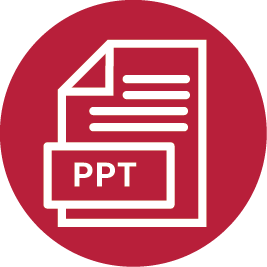
Understanding Trends in Female Labour Force Participation Rate in Rural India: The Role of MGNREGS and DAY-NRLM
Executive Summary
On November 20, 2019, I wrote for The Indian Express on “A Greater Ease of Living.” I had argued that discussions of rural poverty fail to factor in multi-dimensional changes in the rural-agriculture sector in recent years. On May 9, 2022, I wrote again for The Indian Express on how poverty in rural India came down due to pro-poor thrust in government programmes that involved building trust through community mobilisation. On February 1, 2024, I wrote for The Indian Express again on why Rural Female Labour Force Participation Rate (RFLFPR) had gone up and how the evidence suggested that the Deendayal Antyodaya Yojana–National Rural Livelihood Mission (DAY-NRLM) and Mahatma Gandhi National Rural Employment Guarantee Scheme (MGNREGS) play a crucial role in improving female work participation rate. The steady growth of the agriculture sector and the bridging of the gap in Monthly Per Capita Consumption Expenditure (MPCE) reported in recent surveys confirm some change happening in rural lives and livelihoods. This is clearly a rural women farmer-led agricultural growth. There are many lessons for development in other sectors from the steady rates of progress with women’s collectives at the centre for livelihood diversification.
It is equally important to understand that community action can also go wrong. Having seen the ill-consequences of decentralisation without accountability pointed out in first two Performance Audit of MGNREGS (Comptroller and Auditor General of India [CAGI], 2007; CAGI, 2013), it is evident that decentralised community action must be very well thought through. It is not a case of one-size-fit-all or all power without accountability. The challenges of accountability are often resolved through the following six clear priorities. These were undertaken with some success during the last decade. These were: (i) accountability framework for elected local government leaders; (ii) use of technology as a means; (iii) evidence based and community validated assessment of outcomes; (iv) professionals and community resource person (CRP) for effectiveness; (v) decentralised community action through women’s collectives; (vi) untied and adequate funds for local action.
These were internalised in the following manner:
First, in 2011, for the first time, an exclusive programme for women farmers was started under the then National Rural Livelihood Mission called Mahila Kisan Sashaktikaran Pariyojana (MKSP), focusing on sustainable agriculture using bio fertilisers and bio-pesticides. Fruits, vegetables, and animal resources became the prime sectors for diversifying livelihoods. Working with women’s collectives that expanded very significantly from 25 million women in 2014 to over 100 million women under the Rural Livelihood Mission currently, over 50 million women have already been credit linked. After retiring debts, women’s borrowings expanded in rainfed areas into fruits and vegetable cultivation, and large-scale animal resource rearing with modern practices. With CRPs drawn from among local women trained in agriculture and animal husbandry (Krishi Sakhi, Pashu Sakhi), MKSP laid the foundation of women-led livelihood diversification on scale.
Second, in 2014, the decision was taken to spend at least 60 per cent of MGNREGS funds in agriculture and allied activities. Simultaneously, a conscious policy shift toward more individual beneficiary schemes under MGNREGS like ninety-day support in house construction, animal sheds for marginal and small farmers, irrigation wells, farm ponds, mango orchards in rainfed tribal areas where poor still have land, and so on, facilitated the livelihood diversification on scale. Studies have recorded how the thrust on water conservation and individual beneficiary schemes paved the way for a higher level of agricultural and allied activities among women farmers. Evaluation studies have indicated 22 per cent gain in incomes of women under the rural livelihood mission in a period of 6–8 years that they take to mature as collectives.
Third, lower-than-market wage rates under MGNREGS have led to women working more than men under the programme. Nationally 57 per cent of the work has gone to women, further bolstering RFLFPR. 50 million women being credit linked under the DAY-NRLM, besides other opportunities like mudra loans and so on, did translate into many nano enterprises, single women enterprises, etc. The CRP approach of capacity building with large scale involvement of credible civil society organisations like PRADAN made for a real difference in the extension of appropriate agricultural practices. Training in agriculture and animal husbandry at the local level along with the social capital of women’s collectives, have contributed to higher per capita consumption expenditures as well. Network of rural roads under the Pradhan Mantri Gram Sadak Yojana and other State level village road networks helped in marketing of produce. Technology enabled marketing platforms and the demand for fresh vegetables, milk, meat, etc. in urban areas, further facilitated better integration with markets.
Fourth, the women led diversification of livelihoods could have delivered even better income and livelihoods if the levels of education and skills were better. Lack of secondary completion or access to modern day vocational skills, compromises the ability of women to seek higher order economic activity. Therefore, despite a much larger number of poor women diversifying economic activities, most of them still make only a paltry sum of money. We cannot afford to neglect education and skills continuum in rural areas, especially among women.
The clear lesson from the women farmer-led approach to livelihood diversification with access to credit suggests a bottoms up approach of community collectives is perhaps the steadiest way to progress. We do not follow this approach in setting up manufacturing or services. For a more inclusive India, the impetus for large-scale quality employment and incomes calls for an approach that prioritises women and youth collectives, and builds on their social capital. Human development appears the most critical weak link in a faster, higher order movement up the skilling ladder. The women-led agricultural growth is a lesson for planners to recognise the economic potential of a women-led growth with decentralised community action. The recognition of the women as farmers is itself a big step forward as till recent years. Agricultural statistics would make us feel as if women did not matter in this sector, when the truth is that they carry out most of the operations. Denial of agricultural land ownership rights to women in the name of preventing fragmentation of holdings, needs to be re-visited. The steady agricultural growth also highlights how India has successfully made a transformation despite over 80 per cent farm holdings being small or marginal.
Q&A with author
What is the core message of the paper?
This paper seeks to understand the recent trends in the RFLFPR in India. The Periodic Labour Force Surveys (PLFS) indicate that the increase in RFLFPR is largely on account of higher employment for women in agriculture and due to one- and two-person nano-enterprises set up by them. Given the reasons for increasing RFLFPR, it becomes necessary to explore the factors that may be contributing to it.
To enable an understanding of the issue, the paper looks at the data of higher women’s employment under the MGNREGS during the period. It also looks at the expansion in access to credit for women on a large scale under the DAY-NRLM during the said period. The paper also looks at women’s participation in agriculture being recognised formally in the employment data on account of access to credit for agriculture by women
What presents the biggest opportunity?
Women’s contribution to agriculture has been under-reported when in practice over three-fourth of agricultural operations are carried out by them. By giving access to credit to women, their role in agriculture has been formalised. To establish the increase in activity under the two programmes and the scale of their operations, the paper examines whether there was a significant increase in the operations of MGNREGS and DAY-NRLM. Based on the data available from the Ministry of Statistics and Programme Implementation and the Ministry of Rural Development (MoRD), the paper establishes the role of these two programmes in the recent trends in RFLFPR.
What presents the greatest challenge?
It also looks at some other studies on the subject that assign this change to higher rural distress or statistical reporting data collection factors. Based on a rigorous analysis of the data, this paper does not find much merit in some of the reservations on RFLFPR based on methodological issues. The paper concludes that the gains in RFLFPR come because of higher women’s participation in MGNREGS and DAY-NRLM. It may not necessarily lead to higher incomes, as the wages under MGNREGS and the incomes from women’s nano-enterprises are modest.
Find on this page

The Centre for Social and Economic Progress (CSEP) is an independent, public policy think tank with a mandate to conduct research and analysis on critical issues facing India and the world and help shape policies that advance sustainable growth and development.







